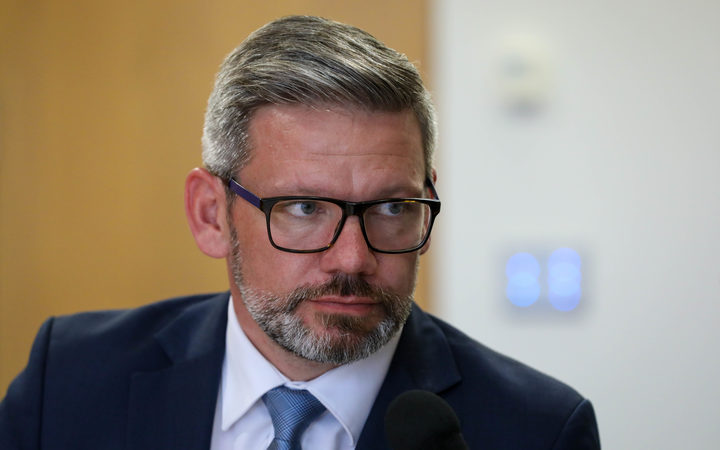The government is changing its approach to health and safety, with a greater focus on mental fatigue in its strategy for the next decade.
Workplace Relations Minister Iain Lees-Galloway launched his 10-year strategy this afternoon, which has been consulted on and developed over the past eight months.

Workplace Relations Minister Iain Lees-Galloway says the point of the strategy is to bring the number of work-related deaths down. Photo: VNP / Phil Smith
Mr Lees-Galloway said the inspiration from laying down a plan like this in print, was seeing too many people die, or their mental and physical health deteriorate, as a result of their work.
“When people die or are seriously injured, families, friends colleagues and communities are deeply affected. And so are workplaces. Business and industry has to stop – and that’s no good for anyone,” he said.
“We must do health and safety better in New Zealand.”
There are up to 60 deaths from work injuries each year, and exposures to chronic health risks are estimated to account for 600-900 deaths a year. The point of the strategy is to bring those numbers down.
Mr Lees-Galloway said New Zealand was “jolted out of complacency” by the Pike River tragedy and progress has been made since then.
But he said there was still a lot of work to do.
He said he dreaded receiving WorkSafe text alerts, which inform him of every fatality in a workplace.
“I receive them far too often. We aren’t even two weeks into December and already there have been three fatalities. That’s three families who will be waking up on Christmas day missing a valued and loved family member.”
Focuses for the strategy include this country’s poor health across the workforce, the growing harm caused by mental health problems, stress, sexual harassment, bullying, delivering on ever-increasing expectations, and fatigue.
A dashboard is going to be created to measure progress in these areas, with input from government agencies and key sector groups. It will be reported on each year.
Businesses, organisations, unions, sector groups and industry associations, iwi, community organisations, and government are expected to work together and a Strategy Reference Group made up of some of these stakeholders will meet a few times a year to ensure this is happening.
“We’re aiming to build a system focused on what will make the biggest impacts and has the capability for everyone to play their part,” Mr Lees-Galloway said.
A key priority highlighted in the strategy is ensuring better outcomes for Māori, who are 44 percent more likely to be at risk of harm.
Pasifika and workers from other ethnic backgrounds also share a similar burden of risk.
Source: RNZ


Recent Comments